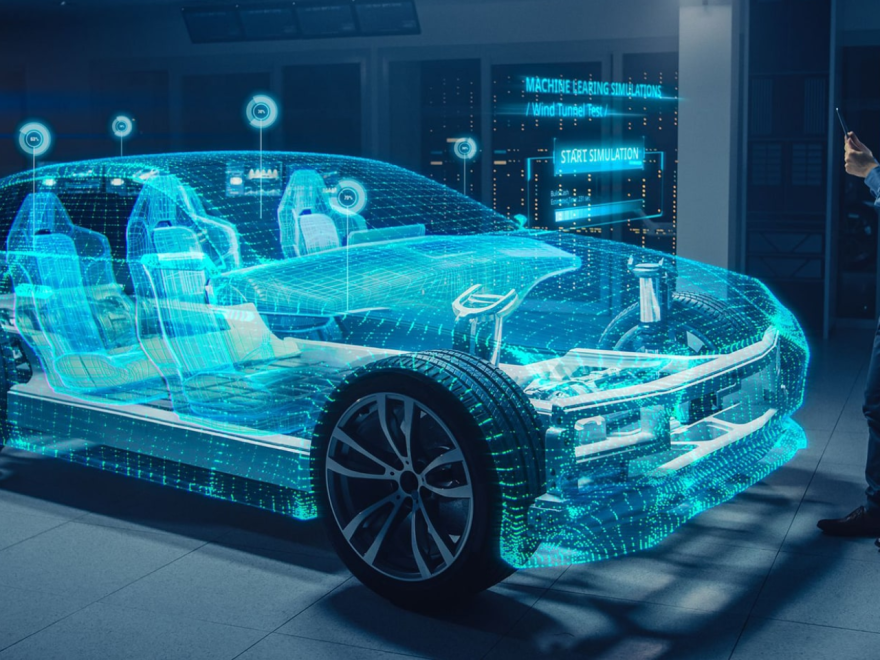The automotive industry is undergoing a significant transformation as it seeks to address pressing environmental concerns. With climate change at the forefront of global issues, the shift toward sustainable automotive design has become essential. This movement aims not only to reduce the ecological footprint of vehicles but also to create innovative solutions that align with green goals. This article explores the principles of sustainable automotive design and its impact on the future of transportation.
Understanding Sustainable Automotive Design
Sustainable automotive design encompasses a holistic approach that prioritises environmental stewardship throughout a vehicle’s lifecycle. This process begins with the choice of materials and extends through manufacturing, usage, and end-of-life considerations. Designers and engineers strive to create vehicles that are energy-efficient, use renewable resources, and minimise waste. By integrating sustainability into every aspect of the design process, the automotive industry can significantly reduce its overall environmental impact.
One key aspect of sustainable automotive design is the focus on lightweight materials. Traditional vehicles often rely on heavy materials like steel and iron, which increase fuel consumption and emissions. By using alternative materials such as aluminium, carbon fiber, and bio-based composites, manufacturers can create lighter vehicles that require less energy to operate. This reduction in weight directly translates to improved fuel efficiency and lower greenhouse gas emissions.
Incorporating Renewable Energy Sources
As the automotive industry moves toward greener designs, the integration of renewable energy sources becomes increasingly important. Electric vehicles (EVs) represent a significant advancement in sustainable automotive design. By utilising electric motors powered by batteries or fuel cells, these vehicles eliminate the need for fossil fuels. Additionally, many manufacturers are exploring ways to incorporate solar panels into vehicle designs. Solar panels can provide supplementary energy to power electronic systems, further enhancing the vehicle’s energy efficiency.
The development of hybrid vehicles also illustrates the shift toward renewable energy in automotive design. These vehicles combine traditional internal combustion engines with electric powertrains, allowing for reduced fuel consumption and lower emissions. By optimising the use of both power sources, hybrid vehicles can achieve greater efficiency and minimise their environmental impact. This approach demonstrates that sustainable design can be both practical and effective in addressing environmental concerns.
Designing for Circular Economy Principles
A crucial element of sustainable automotive design is the adoption of circular economy principles. This approach emphasises designing vehicles for longevity, repairability, and recyclability. By creating vehicles that can be easily maintained and repaired, manufacturers can extend their lifespan and reduce the need for new vehicles. This not only conserves resources but also minimises waste and emissions associated with manufacturing processes.
Recyclability is another vital consideration in sustainable automotive design. As vehicles reach the end of their life cycle, the ability to recycle materials becomes essential. Automakers are increasingly using recyclable materials in their vehicles, including metals, plastics, and glass. Additionally, many manufacturers are investing in technologies that facilitate the recycling process, ensuring that valuable materials can be reclaimed and reused in new vehicle production. This commitment to circular economy principles helps close the loop in the automotive industry, fostering a more sustainable future.
Embracing Eco-Friendly Car Removal Solutions
As sustainable automotive design evolves to meet green goals, the role of car wreckers and cash for cars removal Waterloo services becomes increasingly important. When old cars are no longer roadworthy, their disposal can significantly impact the environment. By choosing reliable car removal services, vehicle owners can ensure their old cars are recycled responsibly, preventing valuable materials from ending up in landfills. Car wreckers efficiently dismantle vehicles, salvaging usable parts and recycling materials, which helps reduce waste and supports a circular economy. This not only aligns with green goals but also promotes the development of sustainable practices in the automotive industry.
The Role of Technology in Sustainable Design
Advancements in technology play a pivotal role in enabling sustainable automotive design. Computer-aided design (CAD) and simulation tools allow engineers to analyse various design scenarios and assess their environmental impact. These tools facilitate the optimization of vehicle structures, aerodynamics, and energy systems, ultimately leading to more efficient and sustainable designs.
Moreover, the rise of smart technology in vehicles has opened new avenues for sustainability. Connected vehicles can communicate with infrastructure and other vehicles to optimise traffic flow and reduce congestion. This technology not only enhances the driving experience but also contributes to lower emissions by minimizing idling and optimizing routes. By leveraging technology, the automotive industry can develop innovative solutions that align with green goals.
Also Visit: https://www.cashforcarnearby.com.au/cash-for-cars/ultimo/
Challenges in Sustainable Automotive Design
Despite the progress made in sustainable automotive design, several challenges persist. One of the primary obstacles is the cost associated with implementing sustainable practices. Advanced materials and technologies often come with a higher price tag, which can deter manufacturers from adopting them. Striking a balance between sustainability and affordability is essential to encourage widespread adoption of green practices in the automotive industry.
Additionally, consumer perceptions and behaviours can influence the success of sustainable automotive design. Many consumers remain hesitant to embrace electric and hybrid vehicles due to concerns about range, charging infrastructure, and overall performance. Educating the public about the benefits of sustainable vehicles and addressing misconceptions can help promote acceptance and drive demand for greener options.
The Future of Sustainable Automotive Design
The future of sustainable automotive design appears promising as the industry continues to innovate and adapt to changing consumer demands and environmental challenges. As governments worldwide implement stricter emissions regulations and promote green initiatives, manufacturers are increasingly investing in sustainable technologies and practices. This shift represents a collective commitment to reducing the environmental impact of transportation.
Collaboration within the industry will also play a crucial role in advancing sustainable automotive design. Partnerships between automakers, suppliers, and research institutions can facilitate the sharing of knowledge and resources, leading to more effective solutions. By working together, stakeholders can accelerate the development and implementation of sustainable practices in the automotive sector.
Conclusion
Sustainable automotive design is essential for meeting green goals and addressing the environmental challenges faced by the automotive industry. By prioritising lightweight materials, renewable energy sources, circular economy principles, and advanced technologies, manufacturers can create vehicles that significantly reduce their ecological footprint. While challenges remain, the commitment to sustainable practices is driving innovation and progress in the industry. As society continues to prioritise environmental stewardship, the role of sustainable automotive design will only grow in importance, paving the way for a more sustainable future in transportation.
Explore more blogs here.



